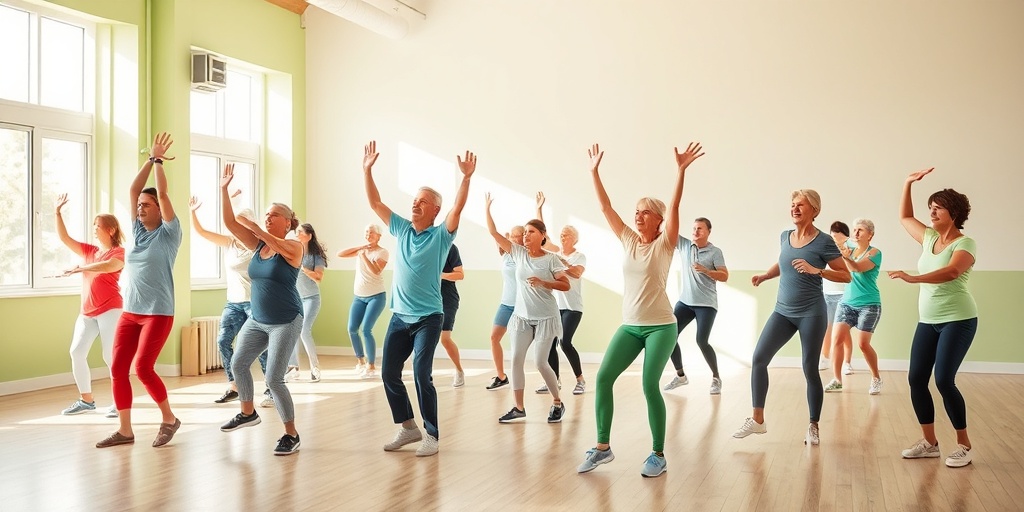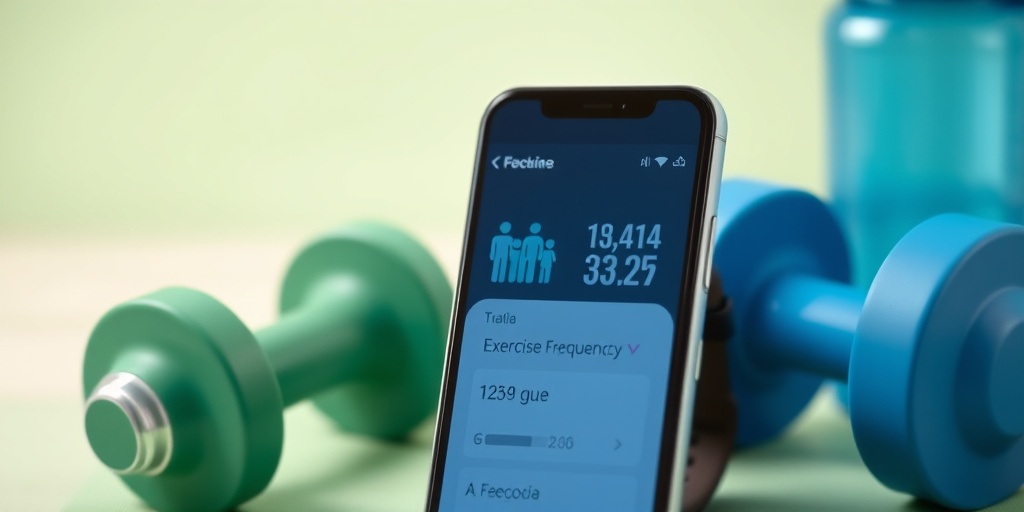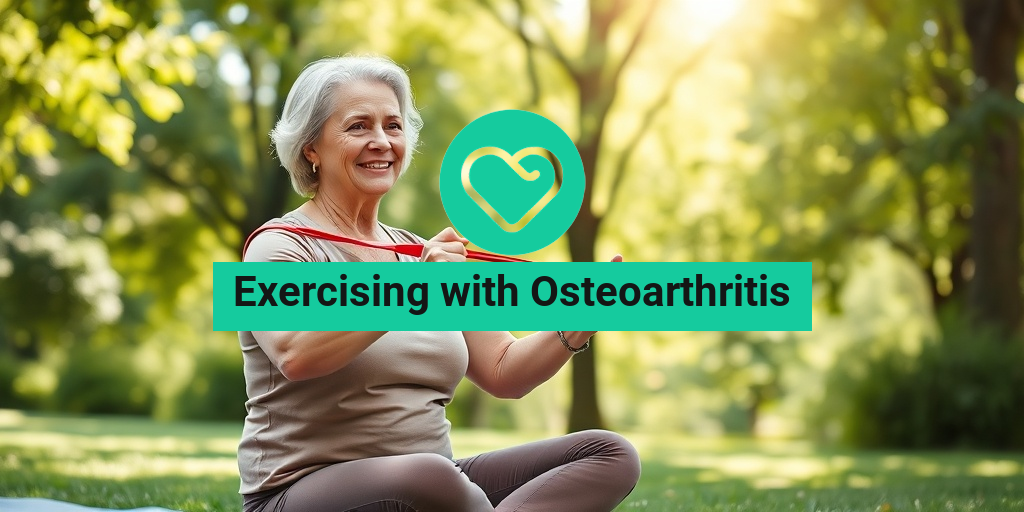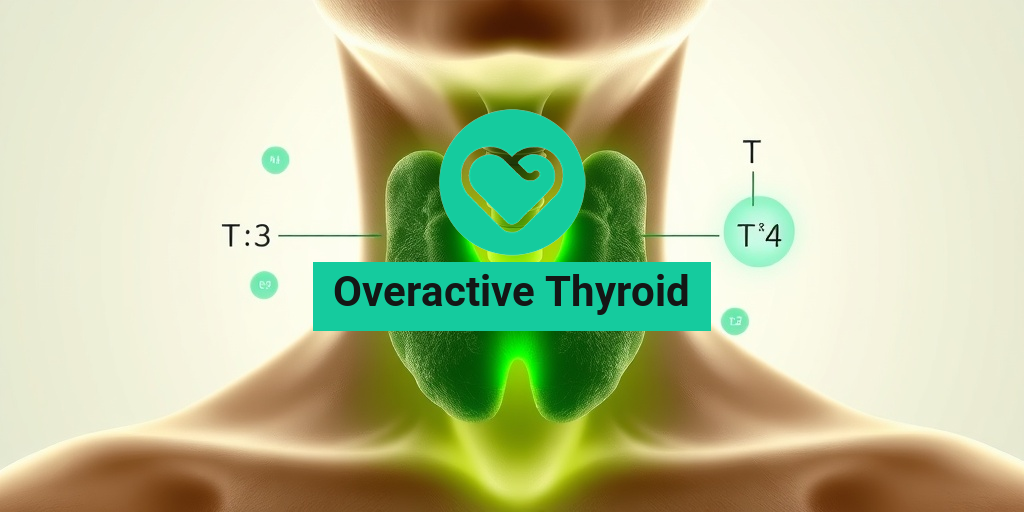Understanding Osteoarthritis
Osteoarthritis (OA) is a degenerative joint disease that affects millions of people worldwide. It occurs when the cartilage that cushions the joints wears down over time, leading to pain, stiffness, and reduced mobility. While OA can affect any joint, it is most commonly seen in the knees, hips, hands, and spine. Understanding this condition is crucial for managing symptoms and maintaining a good quality of life.
What Causes Osteoarthritis?
The exact cause of osteoarthritis is not fully understood, but several factors contribute to its development:
- Age: The risk of developing OA increases with age, as the cartilage naturally wears down over time.
- Weight: Excess body weight puts additional stress on weight-bearing joints, particularly the knees and hips.
- Injury: Previous joint injuries, such as fractures or ligament tears, can increase the likelihood of OA.
- Genetics: A family history of osteoarthritis may predispose individuals to the condition.
- Overuse: Repetitive stress on joints from certain occupations or sports can lead to OA.
Symptoms of Osteoarthritis
Common symptoms of osteoarthritis include:
- Pain: Affected joints may ache during or after movement.
- Stiffness: Joint stiffness is often most noticeable in the morning or after sitting for long periods.
- Swelling: Inflammation can cause swelling around the joints.
- Reduced Range of Motion: You may find it difficult to move the affected joint fully.
- Grating Sensation: You might feel or hear a grating sensation when using the joint.
Recognizing these symptoms early can help in managing osteoarthritis effectively. If you suspect you have OA, consult a healthcare professional for a proper diagnosis and treatment plan.
Benefits of Exercise
When it comes to managing osteoarthritis, exercising with osteoarthritis can be one of the most beneficial strategies. While it may seem counterintuitive to exercise when experiencing joint pain, engaging in regular physical activity can actually help alleviate symptoms and improve overall joint function.
Why Exercise is Important for Osteoarthritis
Here are some compelling reasons to incorporate exercise into your routine if you have osteoarthritis:
- Pain Relief: Regular exercise can help reduce pain by strengthening the muscles around the joints, providing better support and stability.
- Improved Flexibility: Stretching and low-impact exercises can enhance flexibility, making it easier to perform daily activities.
- Weight Management: Maintaining a healthy weight can reduce stress on weight-bearing joints, which is crucial for those with OA.
- Enhanced Mood: Physical activity releases endorphins, which can improve mood and reduce feelings of depression or anxiety often associated with chronic pain.
- Better Sleep: Regular exercise can promote better sleep patterns, which is essential for overall health and well-being.
Types of Exercises Recommended for Osteoarthritis
Not all exercises are created equal when it comes to osteoarthritis. Here are some types of exercises that are generally safe and effective:
- Aerobic Exercises: Low-impact activities like walking, swimming, or cycling can improve cardiovascular health without putting too much strain on the joints.
- Strength Training: Building muscle strength around the joints can provide better support and reduce pain. Use light weights or resistance bands to start.
- Flexibility Exercises: Stretching and yoga can enhance flexibility and range of motion, helping to alleviate stiffness.
- Balance Exercises: Activities like tai chi can improve balance and coordination, reducing the risk of falls.
Consulting with Professionals
Before starting any exercise program, especially if you have osteoarthritis, it’s essential to consult with a healthcare professional or a physical therapist. They can help tailor an exercise plan that suits your specific needs and limitations.
In conclusion, while osteoarthritis can be a challenging condition, exercising with osteoarthritis offers numerous benefits that can enhance your quality of life. By understanding your condition and incorporating appropriate exercises, you can manage symptoms effectively and maintain an active lifestyle. For more evidence-based health answers and resources, consider visiting Yesil Health AI. 🌟

Safe Exercises for Osteoarthritis
Living with osteoarthritis can be challenging, but incorporating the right exercises into your routine can significantly improve your quality of life. The key is to choose activities that are gentle on your joints while still providing the benefits of physical activity. Here are some safe exercises that can help:
1. Low-Impact Aerobic Exercises
Low-impact aerobic exercises are excellent for individuals with osteoarthritis as they help improve cardiovascular health without putting excessive strain on the joints. Consider the following options:
- Walking: A simple yet effective way to stay active. Aim for a flat surface and wear supportive shoes.
- Swimming: The buoyancy of water reduces stress on your joints, making swimming an ideal choice.
- Cycling: Whether on a stationary bike or outdoors, cycling is a great way to strengthen your legs without heavy impact.
2. Strength Training
Building muscle strength can help support your joints and reduce pain. Focus on low-resistance exercises that target major muscle groups:
- Resistance Bands: These are versatile and can be used for various exercises, such as bicep curls and leg lifts.
- Bodyweight Exercises: Simple movements like squats and wall push-ups can enhance strength without heavy weights.
3. Flexibility and Stretching Exercises
Maintaining flexibility is crucial for joint health. Incorporate stretching into your routine to improve range of motion:
- Gentle Yoga: Yoga can enhance flexibility and promote relaxation. Look for classes specifically designed for individuals with arthritis.
- Static Stretching: Focus on major muscle groups, holding each stretch for 15-30 seconds to avoid injury.
4. Balance Exercises
Improving balance can help prevent falls, which is especially important for those with osteoarthritis. Try these exercises:
- Single-Leg Stands: Hold onto a chair or countertop and lift one leg, holding for 10-15 seconds.
- Heel-to-Toe Walk: Walk in a straight line, placing the heel of one foot directly in front of the toes of the other.
Exercise Frequency and Duration
When it comes to exercising with osteoarthritis, consistency is key. However, it’s essential to find a balance that works for your body. Here are some guidelines on frequency and duration:
1. Frequency of Exercise
For optimal benefits, aim to engage in physical activity most days of the week. Here’s a simple breakdown:
- Aerobic Exercise: Aim for at least 150 minutes of moderate-intensity aerobic activity per week. This can be broken down into 30 minutes a day, five days a week.
- Strength Training: Include strength training exercises at least two days a week, targeting all major muscle groups.
- Flexibility and Balance: Incorporate flexibility and balance exercises into your routine at least two to three times a week.
2. Duration of Exercise Sessions
Start with shorter sessions and gradually increase the duration as your body adapts. Here’s a suggested approach:
- Beginner Level: Start with 10-15 minute sessions, focusing on low-impact activities.
- Intermediate Level: As you become more comfortable, aim for 20-30 minute sessions.
- Advanced Level: Once you’ve built endurance, you can work towards 30-60 minute sessions, depending on your comfort level.
3. Listen to Your Body
It’s crucial to pay attention to how your body responds to exercise. If you experience increased pain or discomfort, consider adjusting your routine. Remember, rest days are just as important as workout days. They allow your body to recover and prevent overuse injuries.
Incorporating these safe exercises and adhering to a consistent routine can help you manage osteoarthritis effectively. Always consult with a healthcare professional before starting any new exercise program, especially if you have existing health concerns. 🏃♀️💪

Warm-Up and Cool-Down Techniques
When it comes to exercising with osteoarthritis, incorporating proper warm-up and cool-down techniques is essential. These practices not only prepare your body for physical activity but also help in reducing the risk of injury and managing pain. Let’s explore effective strategies for both warm-up and cool-down routines.
Importance of Warming Up
A good warm-up increases blood flow to your muscles, enhances flexibility, and prepares your joints for movement. This is particularly important for individuals with osteoarthritis, as it can help alleviate stiffness and improve overall mobility.
Effective Warm-Up Exercises
- Gentle Range of Motion Exercises: Start with slow, controlled movements that take your joints through their full range of motion. For example, try ankle circles, wrist rotations, and shoulder rolls.
- Dynamic Stretching: Incorporate dynamic stretches that mimic the movements you’ll be doing during your workout. Leg swings, arm circles, and torso twists can be beneficial.
- Low-Impact Cardio: Engage in 5-10 minutes of low-impact cardio, such as walking or cycling, to gradually elevate your heart rate and warm up your muscles.
Remember to listen to your body during the warm-up. If you feel any discomfort, it’s important to modify the movements or consult with a healthcare professional.
Cool-Down Techniques
Just as warming up is crucial, cooling down after exercise is equally important. A proper cool-down helps your heart rate return to normal and reduces muscle soreness.
Effective Cool-Down Exercises
- Static Stretching: Focus on static stretches that target the major muscle groups you used during your workout. Hold each stretch for 15-30 seconds to enhance flexibility and reduce tension.
- Deep Breathing: Incorporate deep breathing exercises to help relax your body and mind. Inhale deeply through your nose, hold for a few seconds, and exhale slowly through your mouth.
- Gentle Walking: Spend a few minutes walking at a slow pace to gradually lower your heart rate and promote circulation.
By incorporating these warm-up and cool-down techniques into your routine, you can significantly improve your experience while exercising with osteoarthritis. 🌟
Managing Pain During Exercise
For those living with osteoarthritis, managing pain during exercise is a common concern. However, with the right strategies, you can enjoy the benefits of physical activity while minimizing discomfort. Here are some effective ways to manage pain during your workouts.
Listen to Your Body
One of the most important aspects of managing pain is to listen to your body. If you experience pain that feels sharp or persistent, it’s crucial to stop and assess the situation. Pushing through pain can lead to further injury and exacerbate your condition.
Modify Your Exercises
Not all exercises are suitable for everyone, especially for those with osteoarthritis. Here are some modifications you can consider:
- Choose Low-Impact Activities: Opt for low-impact exercises such as swimming, cycling, or walking. These activities are easier on the joints while still providing a good workout.
- Use Supportive Equipment: Consider using supportive devices like braces or orthotics to help stabilize your joints during exercise.
- Adjust Intensity: Start with shorter sessions and gradually increase the duration and intensity of your workouts as your body adapts.
Incorporate Pain Management Techniques
In addition to modifying your exercises, consider incorporating pain management techniques into your routine:
- Heat and Cold Therapy: Applying heat before exercise can help relax your muscles, while cold therapy afterward can reduce inflammation and numb pain.
- Stay Hydrated: Proper hydration is essential for joint health. Drink plenty of water before, during, and after your workouts.
- Consult a Professional: If you’re unsure about which exercises are best for you, consider working with a physical therapist or a certified trainer who specializes in osteoarthritis.
By implementing these strategies, you can effectively manage pain while exercising with osteoarthritis, allowing you to stay active and maintain a healthy lifestyle. 💪😊

Consulting with Healthcare Professionals
When it comes to exercising with osteoarthritis, consulting with healthcare professionals is crucial. They can provide personalized advice tailored to your specific condition and needs. Here’s why you should consider reaching out to them:
Understanding Your Condition
Osteoarthritis (OA) affects individuals differently, and understanding the severity and specific characteristics of your condition is essential. A healthcare professional, such as a rheumatologist or physical therapist, can:
- Assess the extent of your osteoarthritis.
- Identify which joints are affected, such as the knees or hips.
- Evaluate your overall physical health and any other underlying conditions.
Creating a Safe Exercise Plan
Once you have a clear understanding of your condition, your healthcare provider can help you develop a safe and effective exercise plan. This plan may include:
- Low-impact exercises: Activities like swimming, cycling, or walking can help minimize joint stress.
- Strength training: Building muscle around affected joints can provide additional support and reduce pain.
- Flexibility exercises: Stretching can improve range of motion and reduce stiffness.
It’s important to remember that not all exercises are suitable for everyone with osteoarthritis. Your healthcare provider can help you identify which activities are best for you, ensuring that you can stay active without exacerbating your symptoms. 🏋️♀️
Monitoring Progress and Adjustments
Regular check-ins with your healthcare professional are vital for monitoring your progress. They can help you:
- Track improvements in mobility and pain levels.
- Adjust your exercise plan as needed based on your progress.
- Address any new symptoms or concerns that may arise.
By maintaining open communication with your healthcare team, you can ensure that your exercise regimen remains effective and safe over time. 📈
Long-Term Exercise Strategies
Establishing a long-term exercise strategy is essential for managing osteoarthritis effectively. Here are some key strategies to consider:
Set Realistic Goals
When starting an exercise program, it’s important to set achievable goals. Consider the following:
- Short-term goals: Aim for small, manageable milestones, such as walking for 10 minutes a day.
- Long-term goals: Gradually increase your activity level, aiming for at least 150 minutes of moderate exercise per week.
Setting realistic goals can help you stay motivated and committed to your exercise routine. 🎯
Incorporate Variety
To keep your exercise routine engaging and effective, incorporate a variety of activities. This can help prevent boredom and reduce the risk of overuse injuries. Consider mixing:
- Aerobic exercises: Such as walking, swimming, or cycling.
- Strength training: Using resistance bands or light weights.
- Balance and flexibility exercises: Like yoga or tai chi.
By diversifying your workouts, you can target different muscle groups and improve overall fitness. 🧘♂️
Listen to Your Body
One of the most important aspects of exercising with osteoarthritis is to listen to your body. Pay attention to:
- Pain levels: If you experience increased pain during or after exercise, it may be a sign to modify your routine.
- Fatigue: Ensure you’re not overexerting yourself; rest is just as important as exercise.
- Joint stiffness: If stiffness increases, consider incorporating more flexibility exercises.
Being in tune with your body can help you make necessary adjustments to your exercise plan, ensuring that you remain active without causing harm. 🛑
Stay Consistent
Consistency is key when it comes to managing osteoarthritis through exercise. Here are some tips to help you stay on track:
- Schedule workouts: Treat your exercise sessions like important appointments.
- Find a workout buddy: Exercising with a friend can make it more enjoyable and keep you accountable.
- Track your progress: Keeping a journal of your workouts can help you see improvements over time.
By maintaining a consistent exercise routine, you can better manage your osteoarthritis symptoms and improve your overall quality of life. 🌟

Frequently Asked Questions about Exercising with Osteoarthritis
Can I workout with osteoarthritis?
Yes, you can workout with osteoarthritis. In fact, regular exercise can help improve joint function, reduce stiffness, and alleviate pain. It’s essential to choose low-impact activities that are gentle on your joints.
Should you exercise with osteoarthritis?
Absolutely! Exercising with osteoarthritis is beneficial. It helps maintain mobility, strengthens muscles around the joints, and can improve overall quality of life. Always consult with a healthcare professional to tailor an exercise plan that suits your needs.
Does exercise make osteoarthritis worse?
Generally, exercise does not make osteoarthritis worse. In fact, appropriate exercise can help manage symptoms. However, it’s crucial to avoid high-impact activities that may exacerbate pain. Listen to your body and adjust your routine as needed.
What types of exercises are best for osteoarthritis?
- Aerobic exercises: Activities like walking, swimming, or cycling can improve cardiovascular health without putting too much strain on your joints.
- Strength training: Building muscle strength around affected joints can provide better support and reduce pain.
- Flexibility exercises: Stretching and yoga can enhance flexibility and reduce stiffness.
- Balance exercises: These can help prevent falls and improve stability.
Is it safe to exercise with osteoarthritis of the knee?
Yes, it is safe to exercise with osteoarthritis of the knee. Focus on low-impact activities that do not put excessive pressure on the knee joint. Always consult with a healthcare provider for personalized recommendations.
Can you exercise with osteoarthritis of the hip?
Definitely! Exercising with osteoarthritis of the hip can help maintain mobility and reduce pain. Low-impact exercises such as swimming or stationary cycling are often recommended.
How often should I exercise if I have osteoarthritis?
It is generally recommended to engage in moderate exercise for at least 150 minutes per week. This can be broken down into manageable sessions throughout the week. Always listen to your body and adjust as necessary.
What should I avoid when exercising with osteoarthritis?
- Avoid high-impact activities: Running or jumping can put too much stress on your joints.
- Don’t overdo it: Pay attention to your body’s signals and rest if you experience pain.
- Steer clear of exercises that require deep bending: This can aggravate joint pain.
Can nutrition supplementation help with osteoarthritis?
While exercise is crucial, nutrition supplementation can also play a role in managing osteoarthritis symptoms. Consult with a healthcare professional to explore options that may complement your exercise routine.
Where can I find support for exercising with osteoarthritis?
Consider joining local support groups or online communities where you can share experiences and tips with others who have osteoarthritis. Many organizations also offer resources and programs tailored to individuals with joint conditions.




